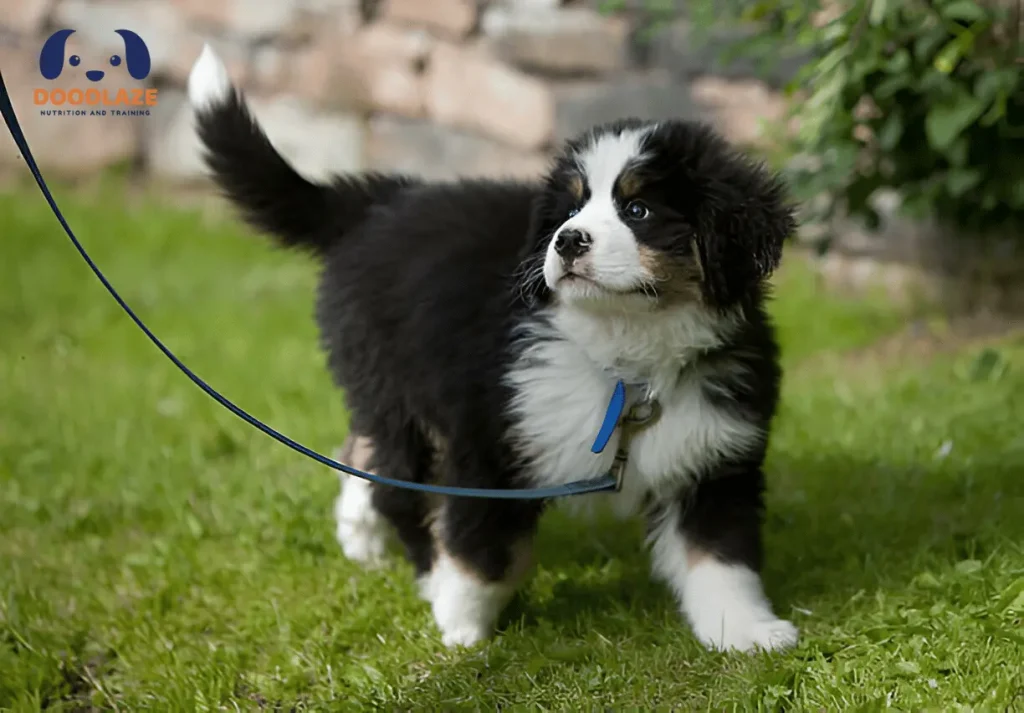A Complete Guide To Bernedoodle Shedding & How To Cope Up With It
One of the most common criticism points raised by pet owners is the accusation of spreading diseases through their pets. While this concept is widely known and commonly believed the reality, however, can differ from one pet to another depending upon several factors.
Many people are afraid of getting pets solely because they might trigger allergies or initiate diseases among them. But little do they know that it might not be necessary that the pet that they want to have does come with all these problems.
You can choose the right pet according to your tolerance levels and then take preventative and curative measures to ensure that those certain factors do not affect you much.
If you’ve been indecisive about getting a bernedoodle only due to this fear of shedding and allergies, we’ll help you out with our extensive research.
Do bernedoodles shed?
The amount of shedding you might have to face with your Bernedoodle can’t be determined in their early time. Even though they come in the low-to-no shedding category, you can still expect shedding to some extent of the bernedoodles.
However, if you are facing such issues or have faced them previously, you can consult a specialist or a vet. If not, you always have the option of waiting up until the bernedoodles are at least 4 weeks old. This will help you identify what their shedding level is and whether the specific puppy will be suitable for your household according to the tolerance levels of every single individual.

Are Bernedoodles Hypoallergenic?
When we speak about being hypoallergenic, there isn’t a single dog in any species that can be 100% hypoallergenic. As we discussed earlier, all the dogs shed to some extent. If they are not leaving fur on the carpet you must be extracting dead hair strands from their body while combing them.
As far as allergies are concerned, every pet will be triggering some allergies at some point. This is less related to the dog spreading allergies but more to the allergy developed by people which is triggered. Poodles are normally considered to be among the most hypoallergenic types but even they and hairless dogs might trigger allergies for some people.

What Causes The Allergies?
While one might have the allergies passed on to them genetically beforehand, it is also highly possible to develop allergies over time due to the weaknesses in the immune system, type of antigens, and the environment.
However, it is crucial to understand that the fur left on floors and furniture is not the reason for the allergies that you might be suffering from. According to researchers, the proteins found in dog dander, saliva, and urine are the reasons that might cause allergies in people.
The major reasons behind. Now, dogs like to lick themselves, and their dander will also

get stuck on their fur. Naturally, if a dog sheds a considerable amount of hair, the allergens will be left on your furniture, and clothes, and ultimately trigger allergic reactions.
While you might think that dogs that don’t shed much are a better option, you still might face issues if you do not take the precautionary measures yourself. But yes, overall it would be a much better choice for you if you want to avoid the risk of developing allergies or triggering the ones that you already have.
Since they won’t shed much, you won’t have to worry about the dander getting spread on the carpet, the furniture, or the floor. Hence, it can be a viable option for you to start your pet journey.
Why is my Bernedoodle shedding too much?
Even though Bernedoodles do not shed that much, there can be certain times in which they might be giving off a lot of fur. If this happens, worry not as there are several factors accounting for this. We’ve done all the research beforehand for you; so let’s have a look.
Time of Development
The most common reason behind the excessive Bernedoodle shedding is their growth and development. We’re all aware that the Bernedoodle has some unique color combinations that get developed over time.
During their 4th to 6th month, they fully develop their color patterns which often results in darkening of the colors and further penetration of the shade. As a result, they might also exhibit excessive shedding of fur.
Genetics
If the Goldendoodle has inherited shedding genes from the parents, it is inevitable for them to shed a lot. While this trait might not be very dominant in the early time, it can show more prominence over the months.
The only reason to avoid this is to wait for 6 months before you adopt a new Goldendoodle to ensure that they don’t shed excessively. However, if you’re breeding them yourself, make sure you take advice from an expert to get this specific gene factored out as much as possible.
How to Avoid Allergy Development During Bernedoodle Shedding?
Certainly, you would be interested in knowing the preventive measures after knowing what the adverse effects might be. Therefore, we’ve already combined a routine for you that you can follow to minimize the risk of triggering or developing allergies.
Shampoo regularly
Just because the pet has beautiful fur and looks lovely while rough does not mean you shouldn’t wash or clean them regularly. Make sure that you apply shampoo to their fur once a week so that all the extra dander or weak hair is gotten rid of on time.
Once you start doing this, you will realize that it does wonders in helping to minimize the risk.
Regular Combing
It can’t be stressed enough that to ensure that the spread of dander is minimized, you must comb the Bernedoodle regularly. They will take all the broken strands of hair and extract them from their bodies without them spreading on the floor.
Provided that you’ve cleaned the hair previously, it will be much easier for you to comb and take all the extra hair out. However, if you feel like combing first works better for you, go for it.
Sanitize
It is necessary that you sanitize the paws, mouth, nose, and other parts of your pet so that the Bernedoodle shedding would not have a significant impact on your low tolerance levels.
To make sure that their saliva is not harmful or allergenic, you can add specific items to their diet after consultation with your vet. Not only will it keep the dander away but will also ensure that other germs are not dominant in this context.
Overall Hygiene
Lastly, you must ensure that the Goldendoodle is always clean and that a proper hygiene routine is followed regularly. Besides, the litter box or litter area should be regularly cleaned and sanitized to ensure that no germs are coming from their urine as well. Do you know about Merle Bernedoodle Breed.
FAQs
Conclusion
Bernedoodle shedding is inevitable, while the amount is controllable in some scenarios, the main factor is to ensure that it doesn’t trigger your allergies or help develop them.
Taking care of all the steps mentioned above, you will certainly feel a visible result and if you are looking forward to getting a Bernedoodle, this routine will surely help you stay safe. So what are you waiting for? Go get your Bernedoodle puppy today!


2 Comments